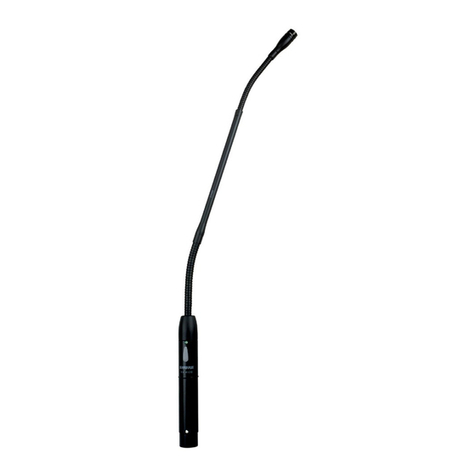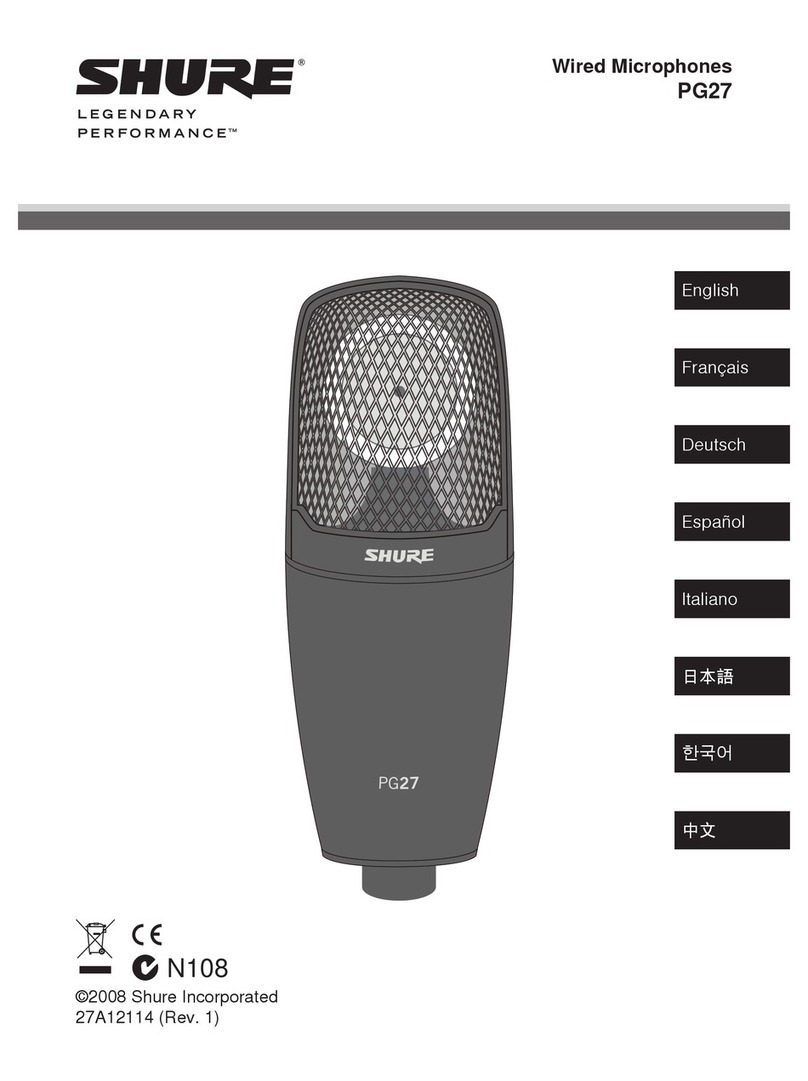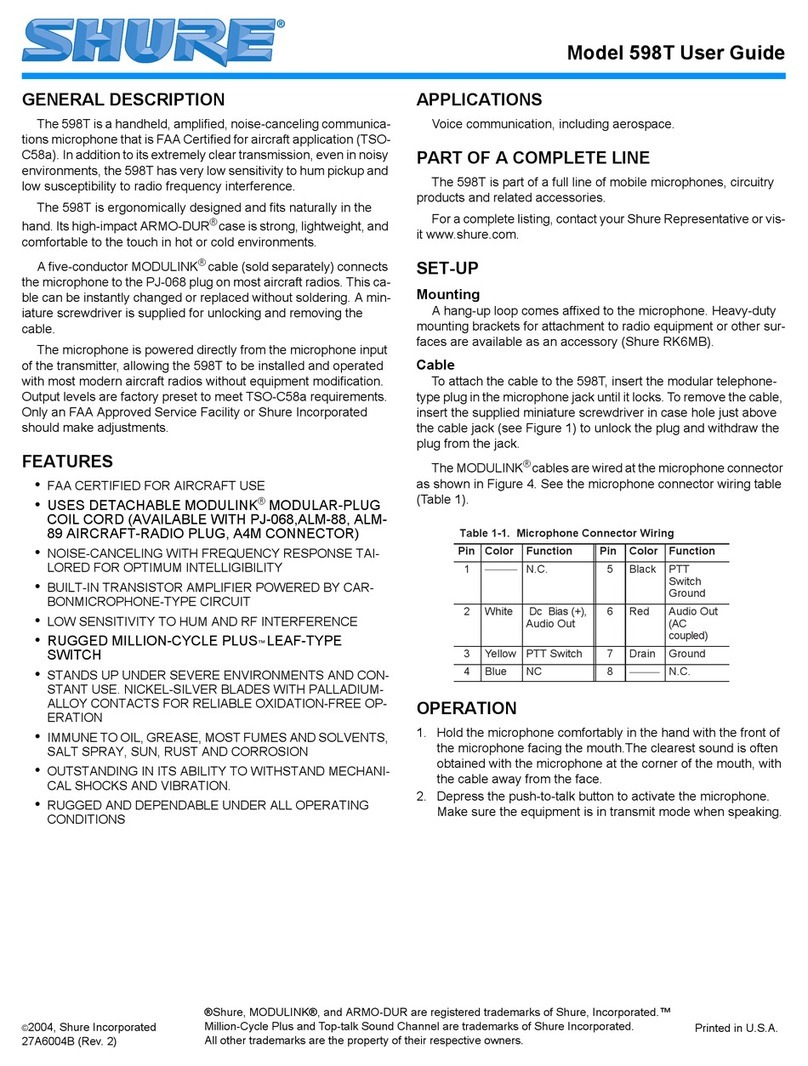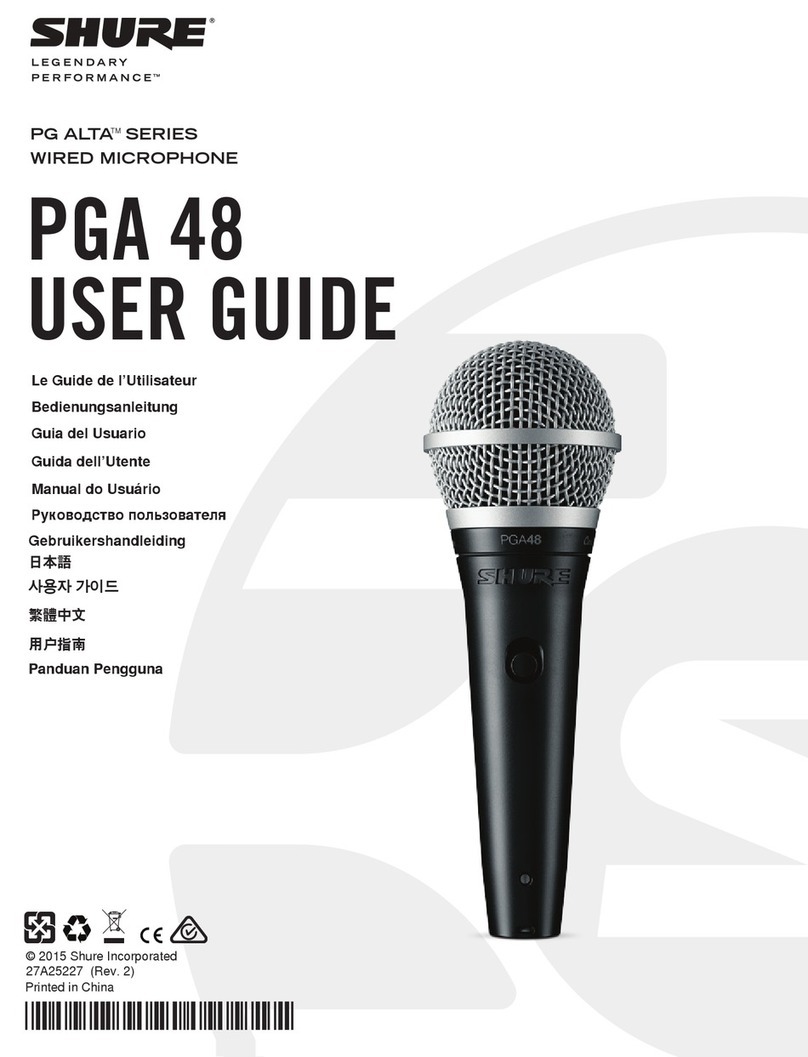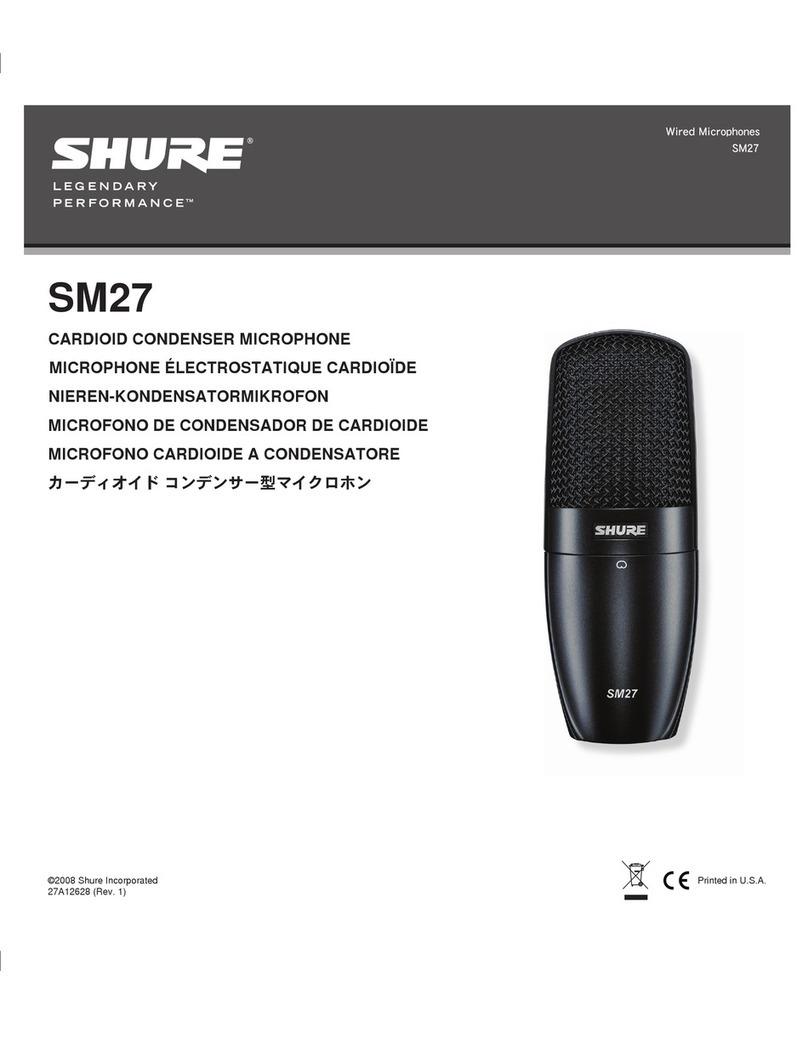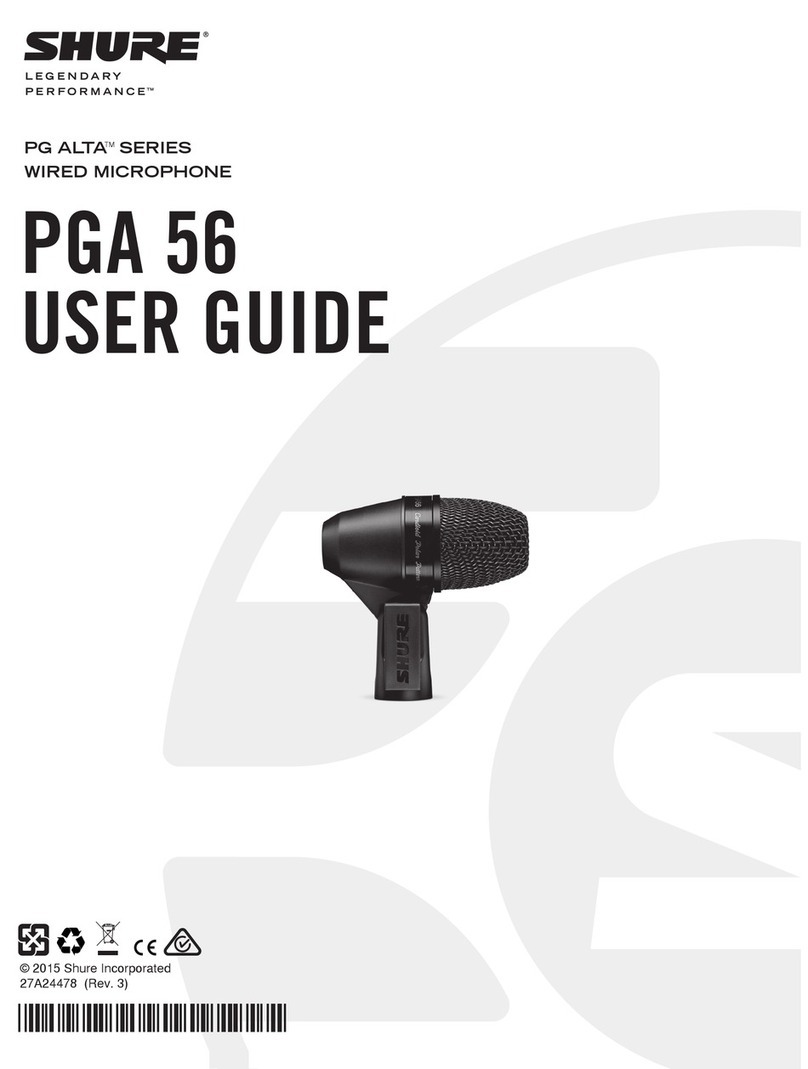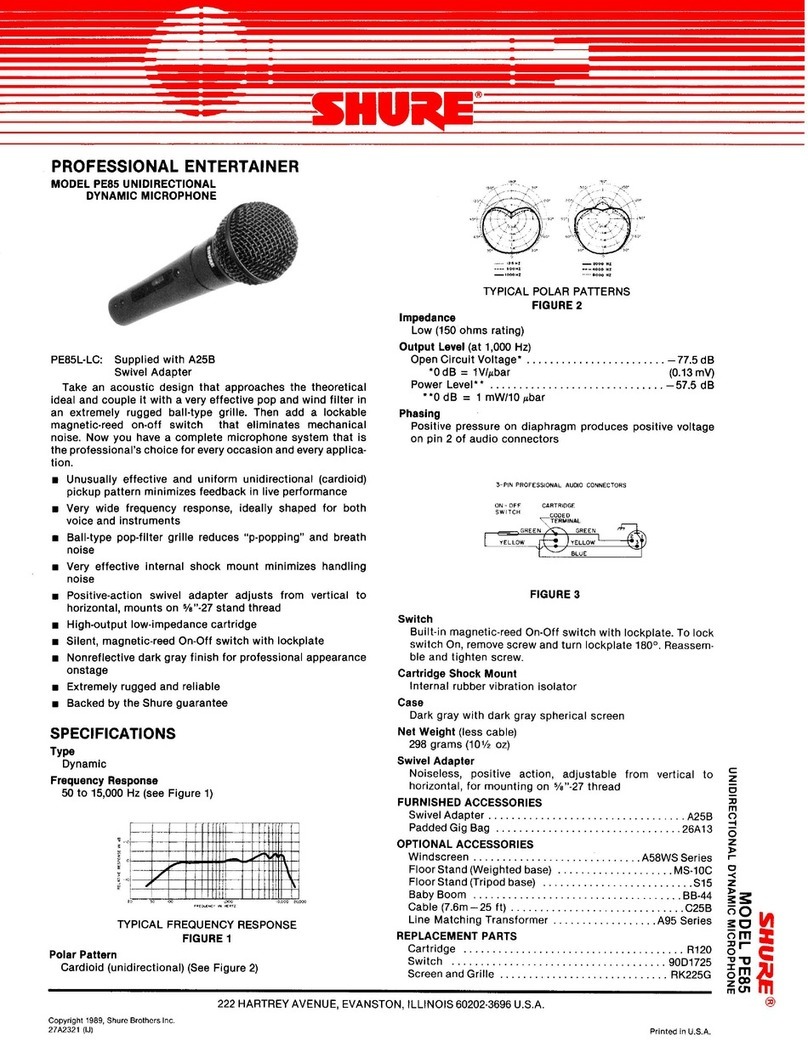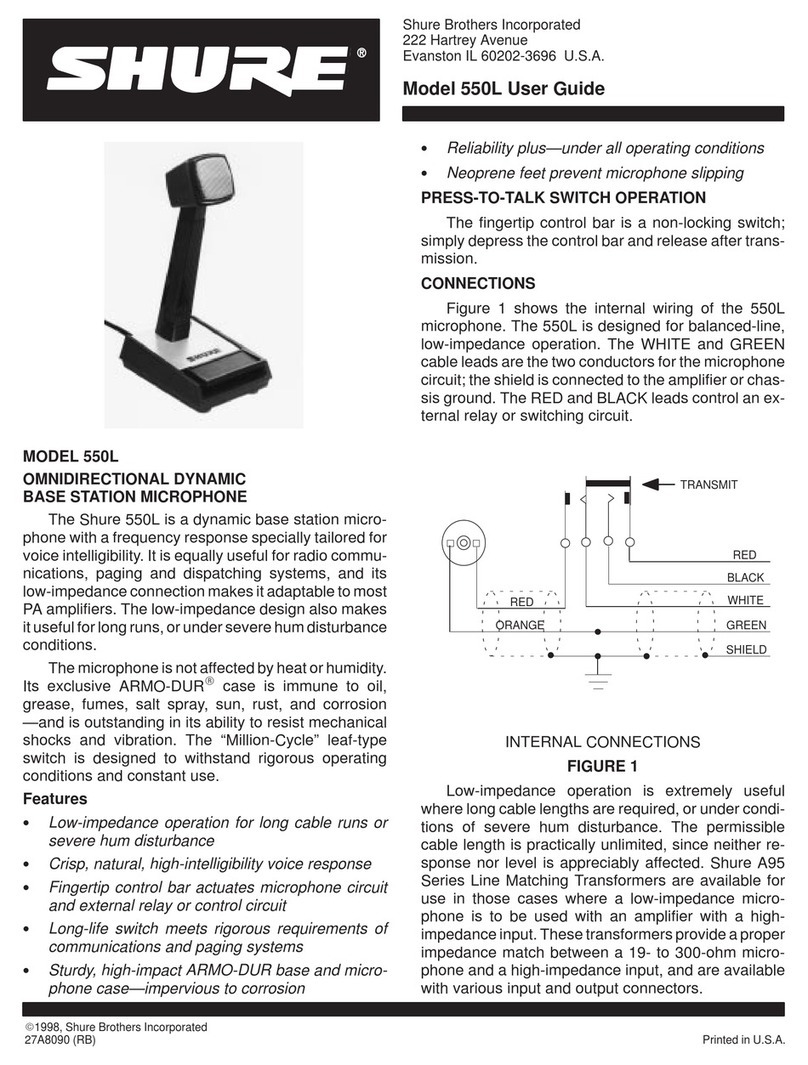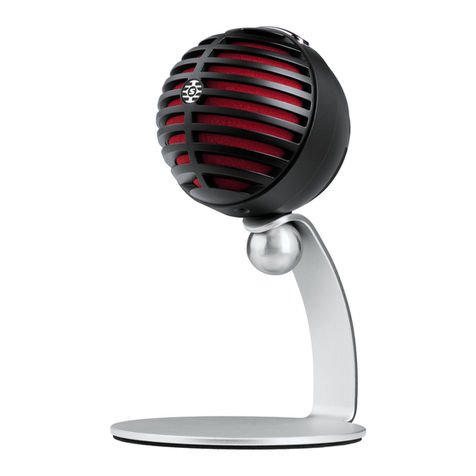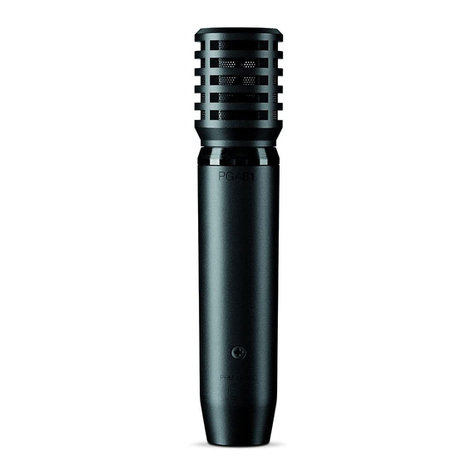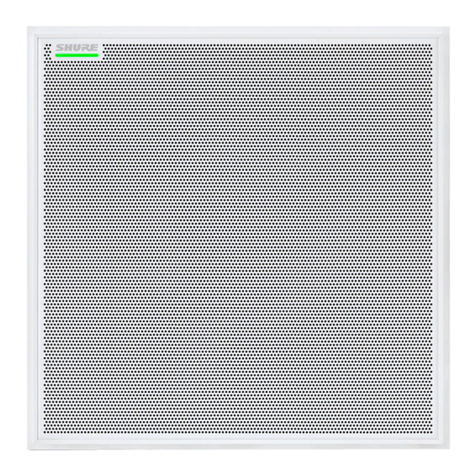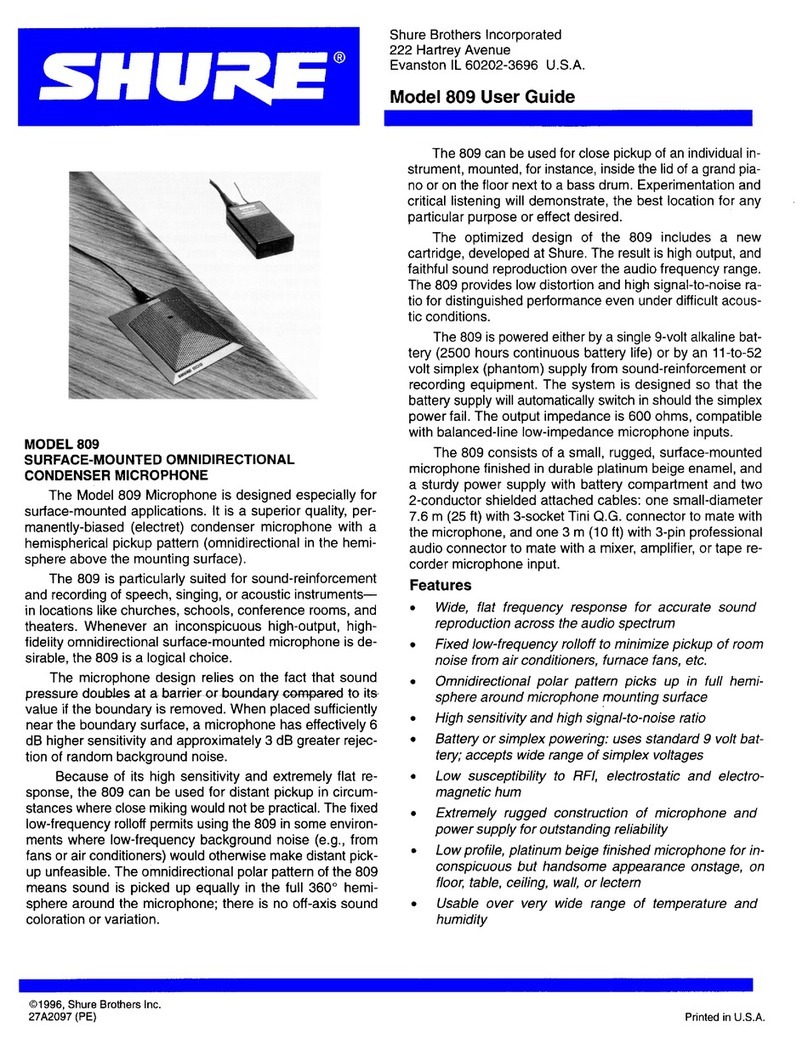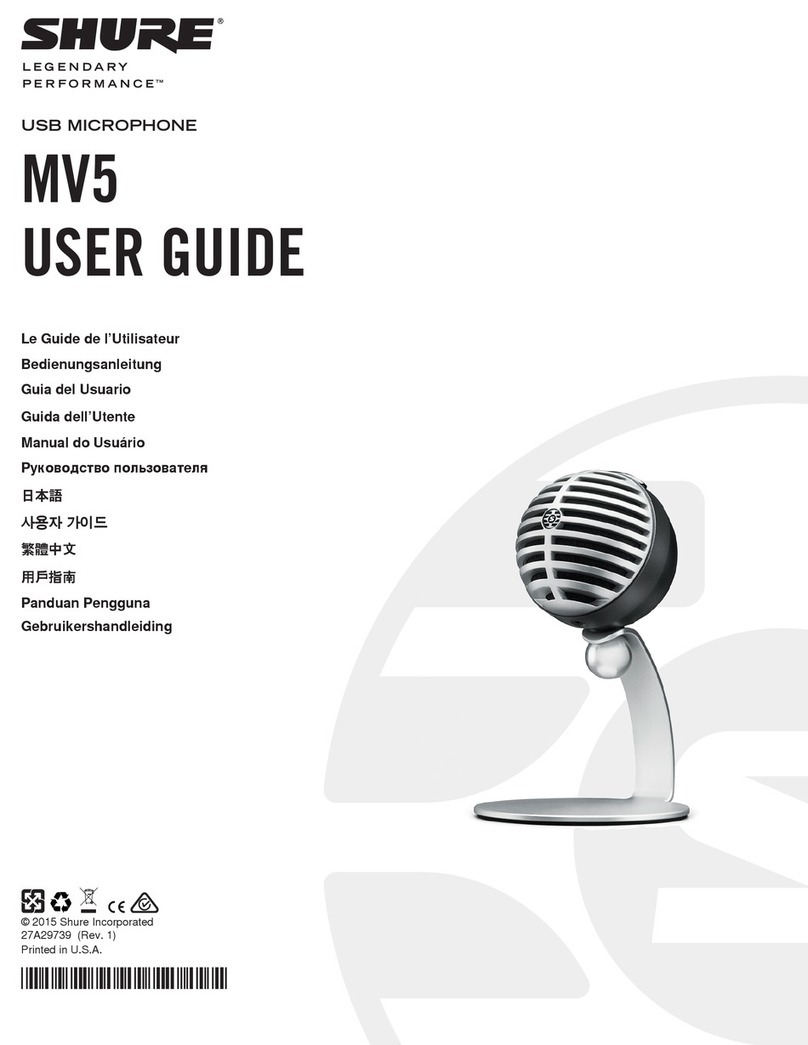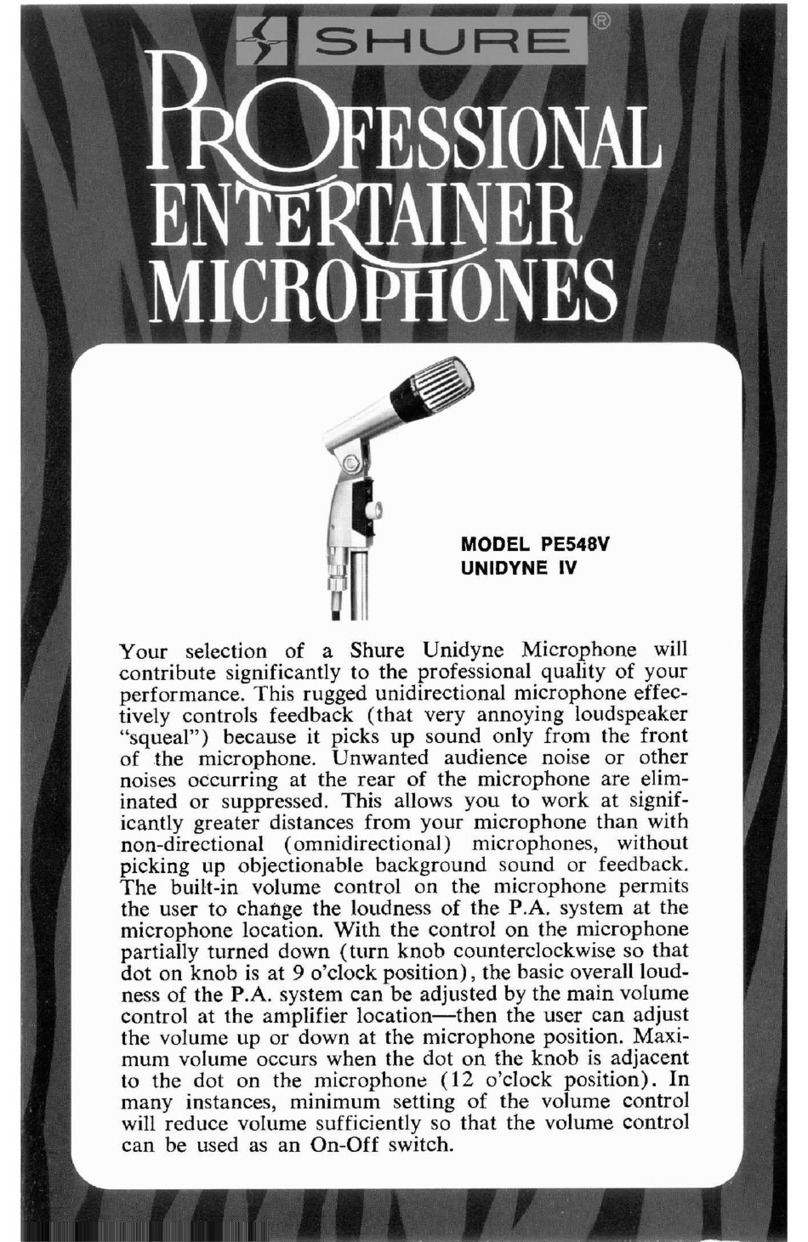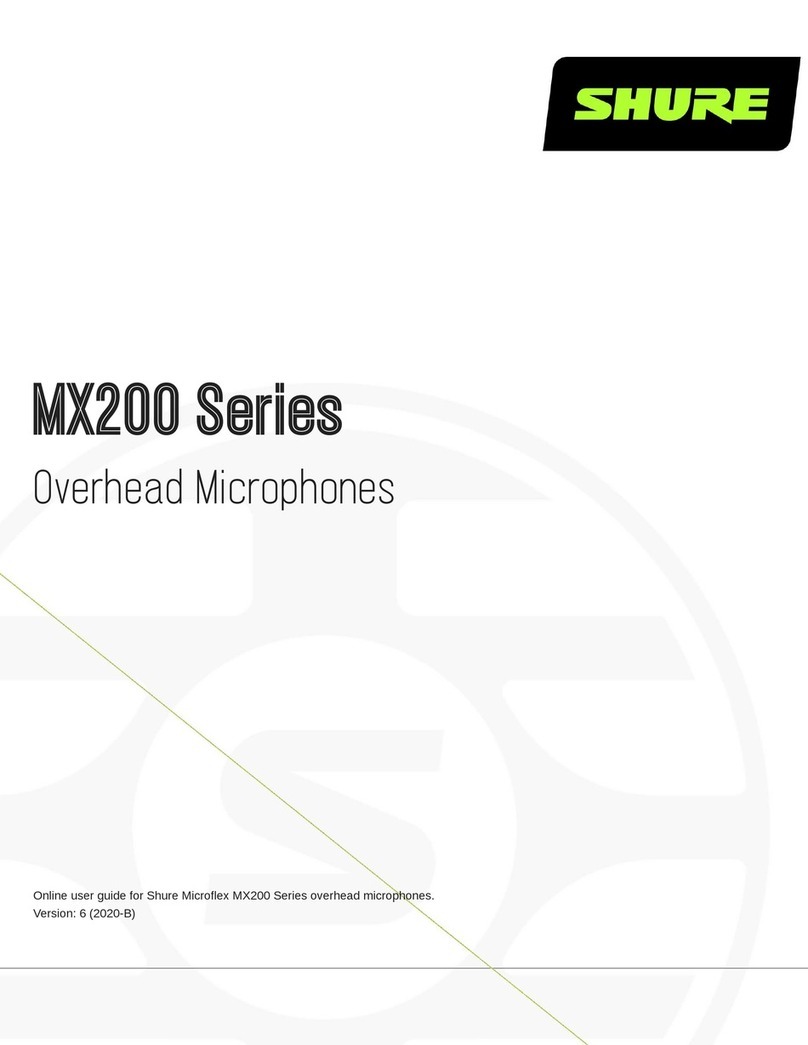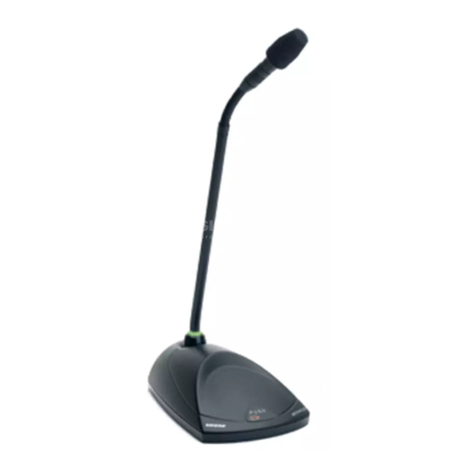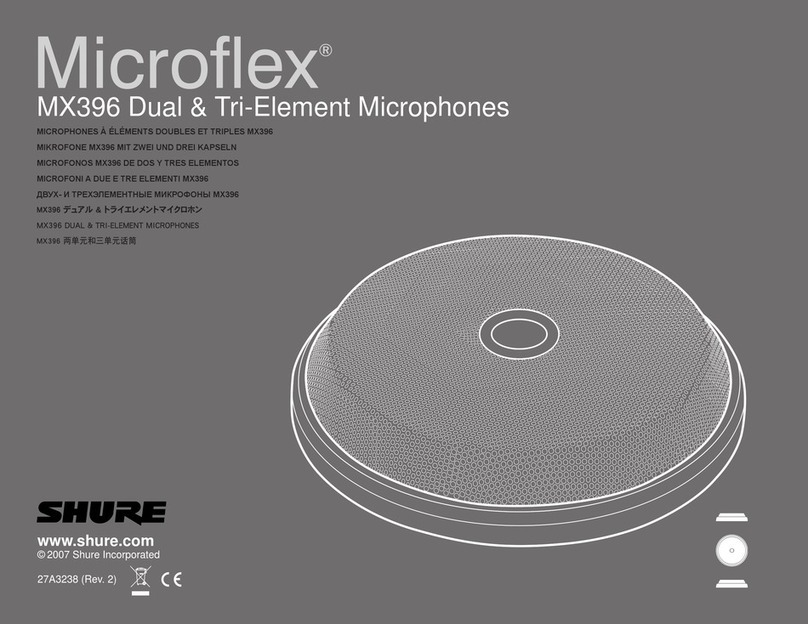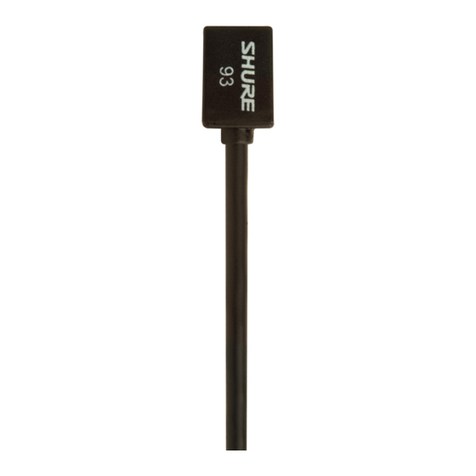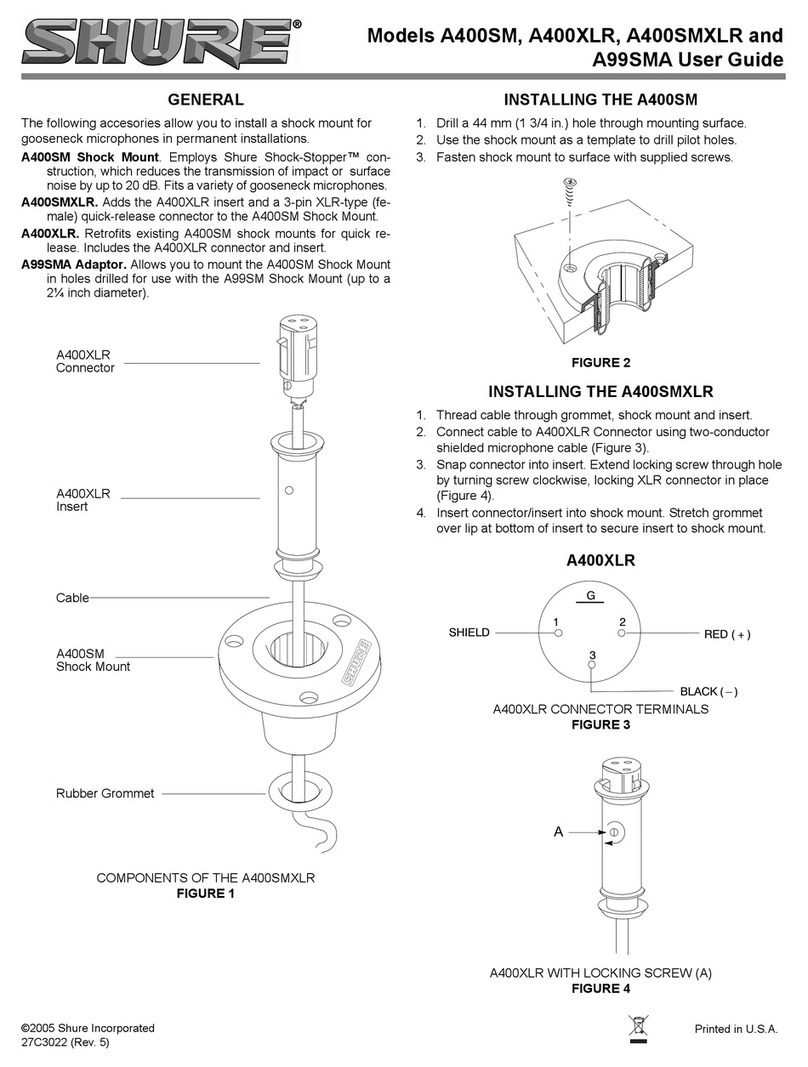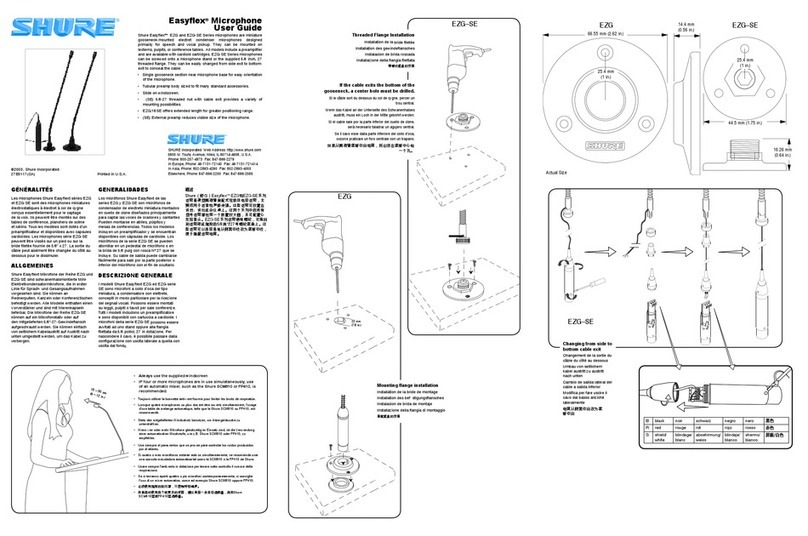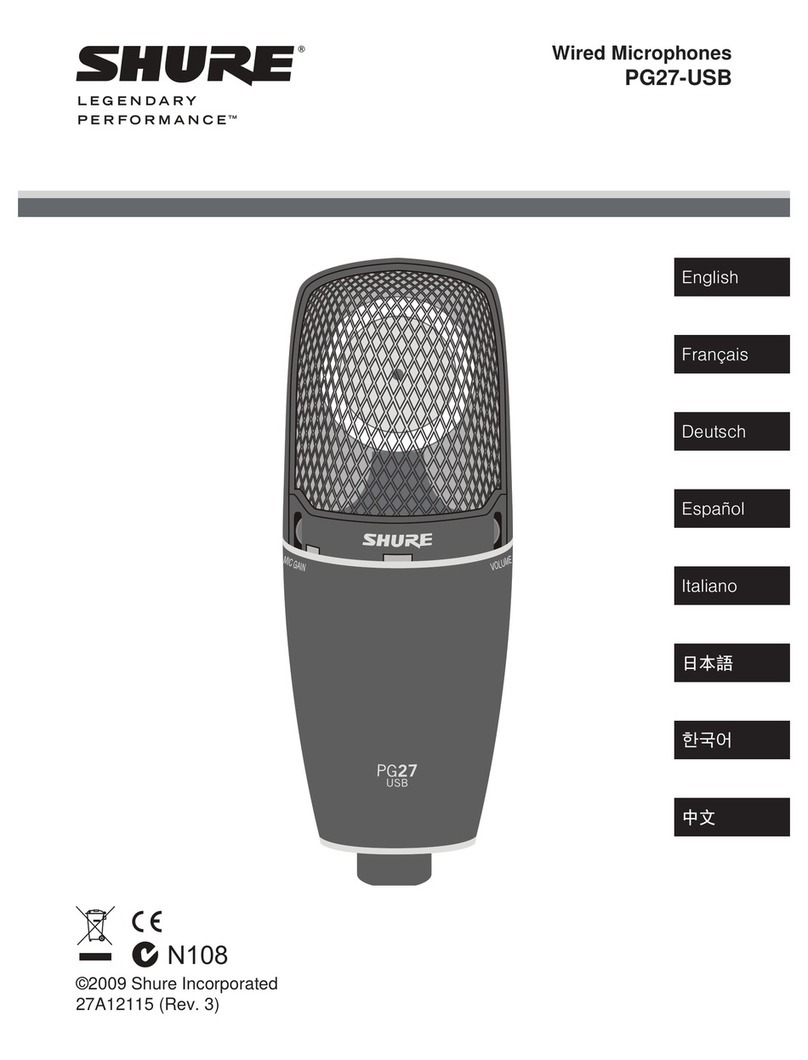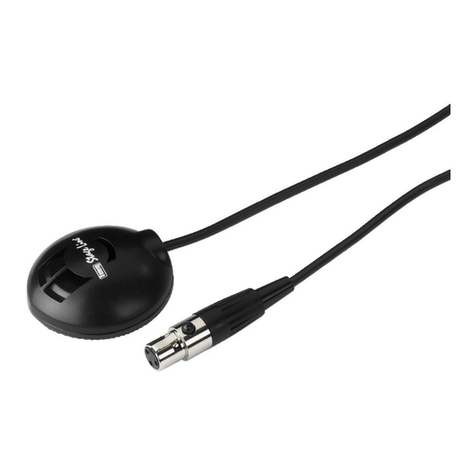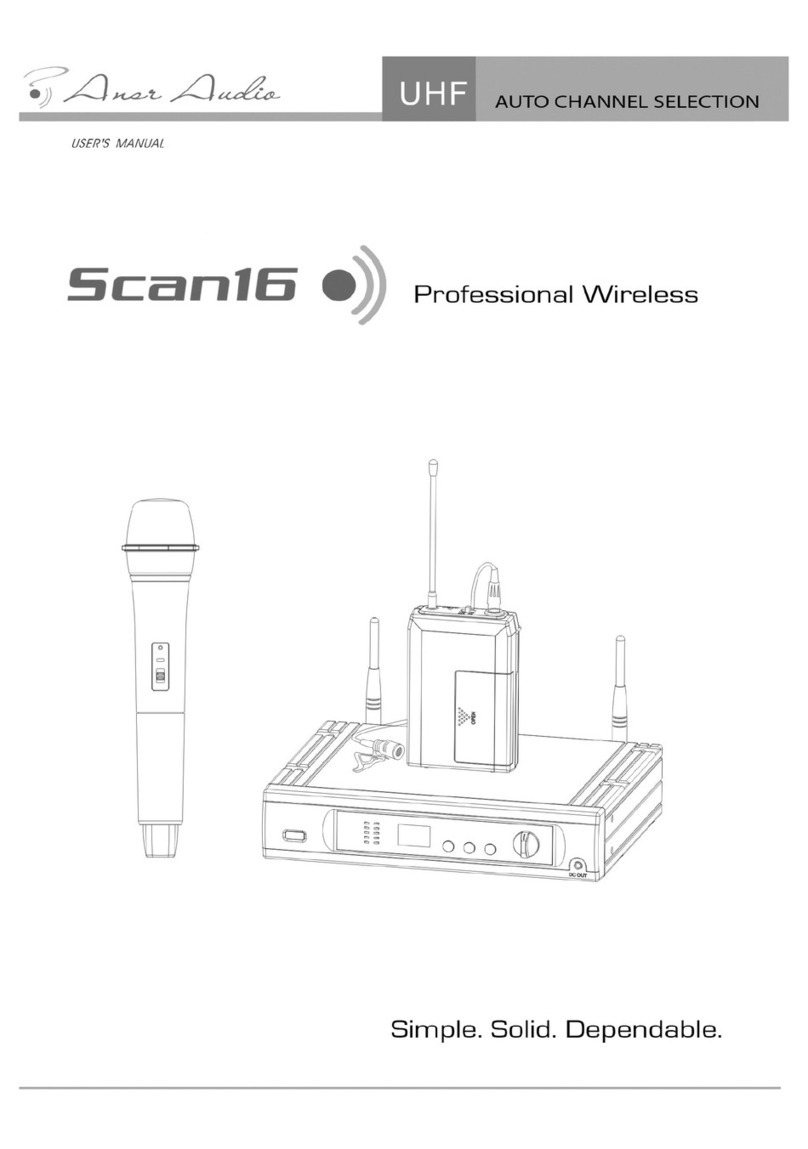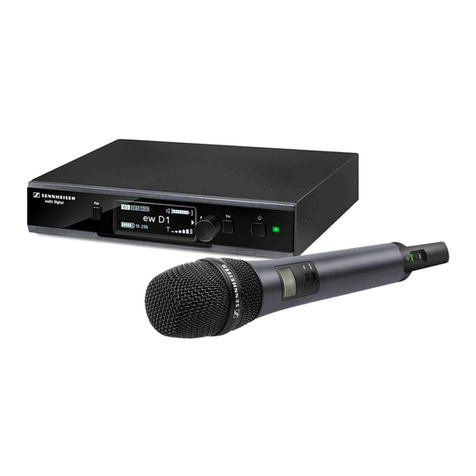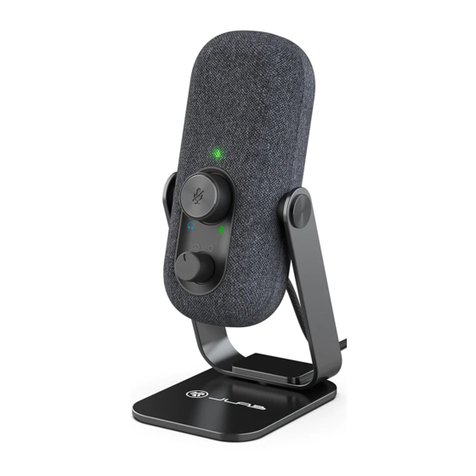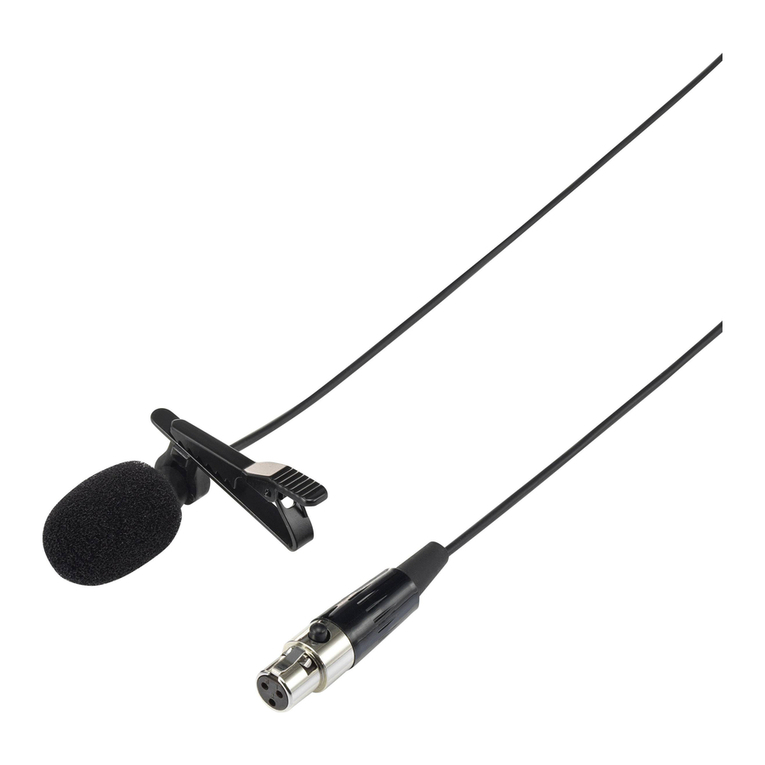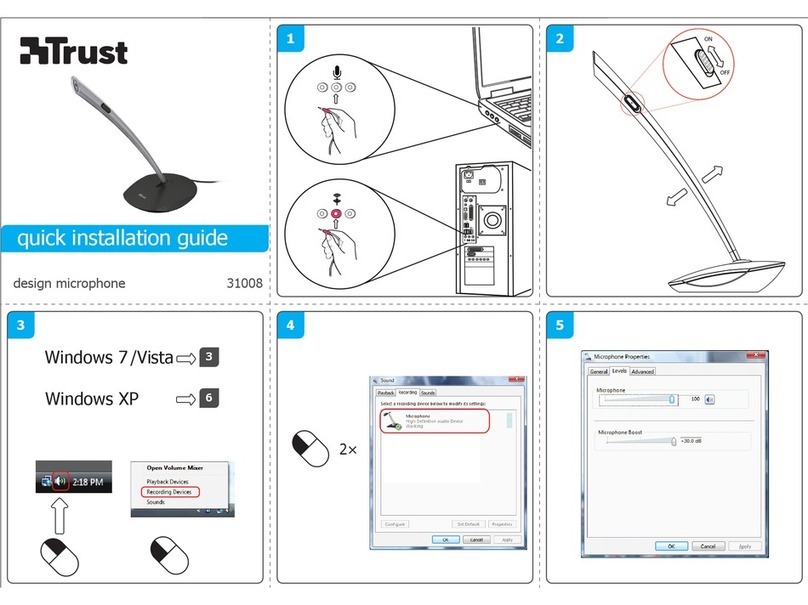
2
OPERATION OF MX1BP PREAMPLIFIER (Figure 3)
1. With the Mic Mute/On switch in the Mute position, plug the mi-
crophone into the preamplifier's 4-pin mini connector. (NOTE:
Power LED Indicator will remain lit in both the On and Mute mi-
crophone modes.)
2. Plug XLR cable from the preamplifier into the respective audio
device microphone input.
3. Switch the Mic Mute/On switch to the On position.
4. Adjust the gain level of the audio input device, if necessary.
INTERNAL LOW-CUT FILTER
The MXIBP has an internal low-cut filter. As shipped from the
factory, it attenuates 6dB per octave below 25 Hz. To change the
filter to attenuate 12dB per octave below 95 Hz, follow the
instructions below:
1. Remove the three screws from the underside of the MX1BP.
2. Remove the plastic cover and lift the printed circuit board with
the attached faceplate up and out of the pack.
3. Turn over the printed circuit board and locate the jumper strad-
dling the first and second pins nearest the input jack. Reposi-
tion the jumper to straddle the second and third pins.
4. Re-assemble the MX1BP by re-seating the printed circuit
board and faceplate. Replace the plastic cover and the three
screws.
For additional technical assistance, phone Shure at 1-847-600-
8440. In Europe, phone 49-7131-72140.
USE WITH PHANTOM POWER
The MX1BP can also be used in situations where phantom power
is available.
Phantom power may be applied with the 9 V battery in place or re-
moved. With the battery installed, the MX1BP will silently and au-
tomatically switch to the battery reserve should phantom power
fail. Battery depletion will not occur while phantom power is ap-
plied.
SPECIFICATIONS
These specifications apply only to the MX391 microphone when
used with the supplied MX1BP preamplifier. All measurements
taken with the microphone mounted on a wooden surface 762 mm
x 762 mm (30 in. x 30 in.).
Wiring Diagram
Polar Pattern (Figure 8 on page 12)
MX391BP/C: Cardioid (MX391BP/C )
MX391BP/S: Supercardioid (MX391BP/S)
MX391BP/O: Omnidirectional (MX391BP/O)
Polarity
Positive pressure on the diaphragm produces positive voltage on pin
2 relative to pin 3 of the output XLR connector.
Environmental Requirements
Operating Temperature Range: -18°C to 57°C (0°F to 135°F)
Relative HumidityStorage Temperature Range: -29°C to 73°C (-20°
F to 165°F0 to 95%)
Dimensions
See Figure 5 on page 11
Frequency Response (Figure 7 on page 13)
50 to 17,000 Hz
Polar Pattern (Figure 8 on page 13)
Cardioid (MX391/C)
Supercardioid (MX391/S)
Omnidirectional (MX391/O)
Output Impedance (at 1000 Hz)
EIA Rated at 150ΩΩ(115ΩΩactual)
EIA Rated at 150Ω(180Ωactual)
Open Circuit Sensitivity
*1 microbar = 74 dB SPL **1 Pascal = 94 dB SPL
Maximum Sound Pressure Level
(1 kHz at 1% Total Harmonic Distortion, 1 kΩload)
Cardioid: 133.5117.0 dB
Supercardioid: 132.516.0 dB
Omnidirectional: 128.011.5 dB
Signal to Noise Ratio
(referenced at 94 dB SPL at 1 kHz, with 1 kΩload)
Cardioid: 67.071.0 dB
Supercardioid: 72 68.0 dB
Omnidirectional: 72.5 dB
Equivalent Output Noise (A-weighted, with 1 kΩload)
Cardioid: 27.0 dB SPL (23.0 dB SPL with mute switch)
Supercardioid: 26.0 dB SPL (22.0 dB SPL with mute switch)
Omnidirectional: 21.5 dB SPL (17.5 dB SPL with mute switch)
Omnidirectional: 76.5 dB
Equivalent Output Noise (A-weighted)
Cardioid: 23.0 dB SPL
Supercardioid: 22.0 dB SPL
Omnidirectional: 17.5 dB SPL
Dynamic Range at 1 kΩLoad
106.5 dB
Common Mode Rejection
45 dB minimum, 10 Hz to 100 kHz
Preamplifier Output Clipping Level
-6 dBV (0.5 V)
Low Frequency Rolloff
Factory default: 6 dB per octave below 25 Hz
Alternate setting: 12 dB per octave below 95 Hz
MX1BP Dimensions (Figure 5 on page 12)
84.3 mm H x 65.2 mm W x 25.7 mm D (3.32" x 2.57" x 1.01")
MX1BP Net Weight:
255 g (9 oz.) with attached cabling
Cable
One 3.7 m (12 ft) 2 conductor shielded output cable with 3-pin male
XLR connector
Power Requirements
9 V alkaline battery (Duracell®MN1604 recommended); 8.4 V NiCd
rechargeable battery or 9 V Ultralife®lithium battery optional; or, with
phantom power, 10 V to 52 V dc.
Environmental Requirements
Operating Temperature Range: -18°C to 57°C (0°F to 135°F)
Relative Humidity: 0 to 95%
Battery Life (nominal)
600 continouscontinuous hours with 9 V alkaline battery
Battery Current (nominal)
0.8 mA
MX1BP Input Connector
Male 4-pin mini connector
FIGURE 3
PIN 2 = RED LEAD
PIN 1 = SHIELD (use only HALF
of the shield, solder the other half
to cable clamp)
PINS 3 and 4 = BLACK LEAD
(jumped)
4
3
1
2
FIGURE 4
Cartridge Type 1 kHz ref. 1 V per
microbar * 1 kHz ref. 1 V per
Pascal **
Cardioid -66.547.5 dB
(.4734.22 mV)
-46.527.5 dB (4.732.2
mV)
Supercardioid -65.546.5 dB
(.5314.73 mV)
-26.545.5 dB
(5.3147.3 mV)
Omnidirectional -42.061.0 dB
(.8917.94 mV)
-41.022.0 dB
(8.9179.4 mV)
